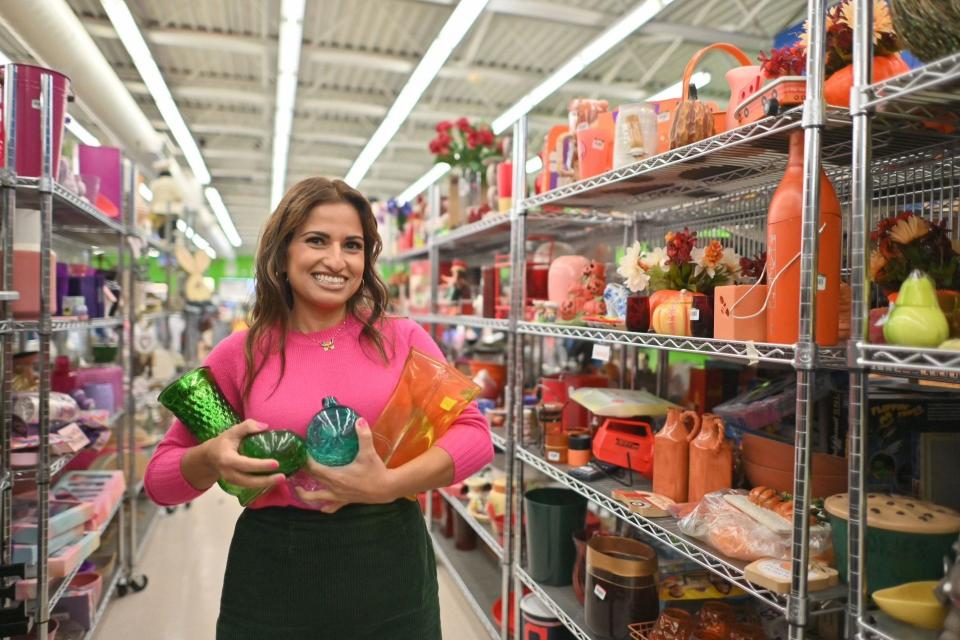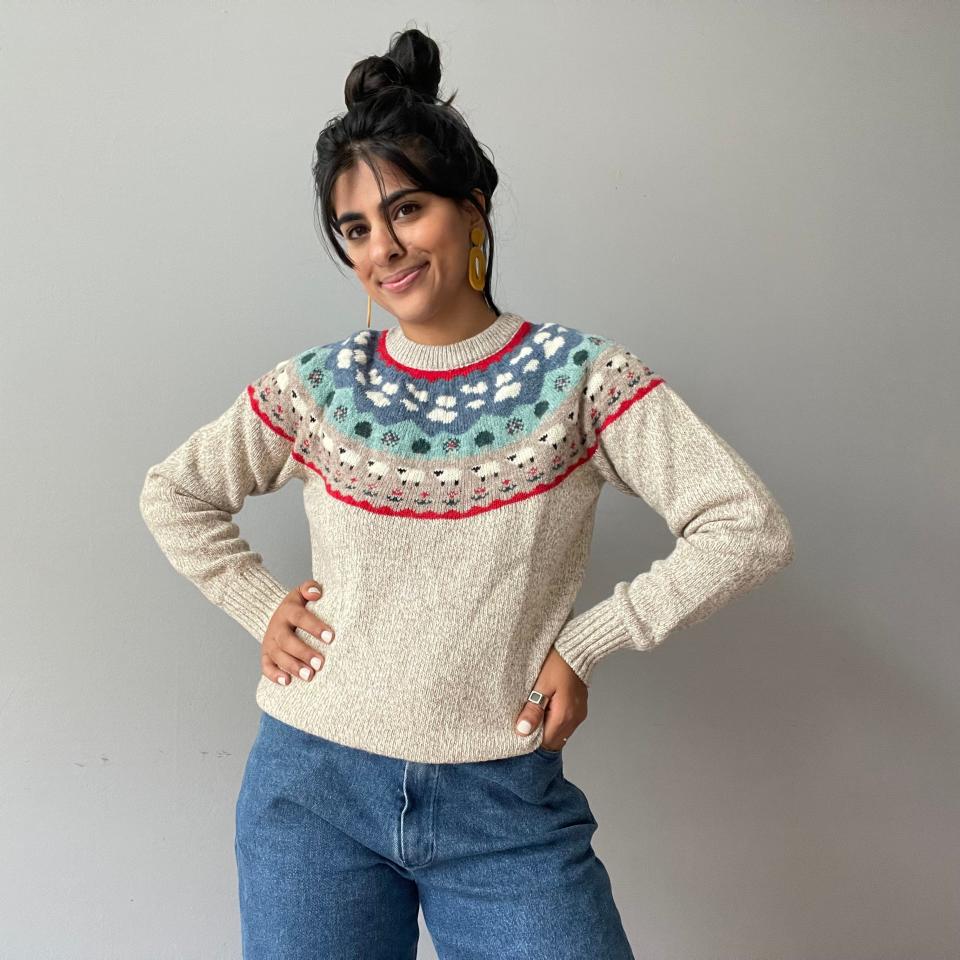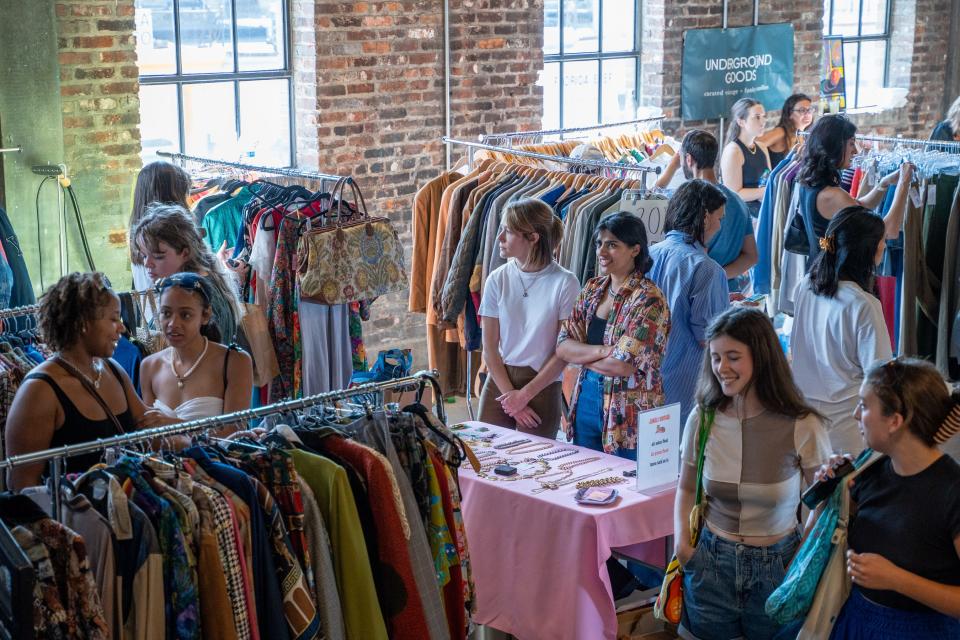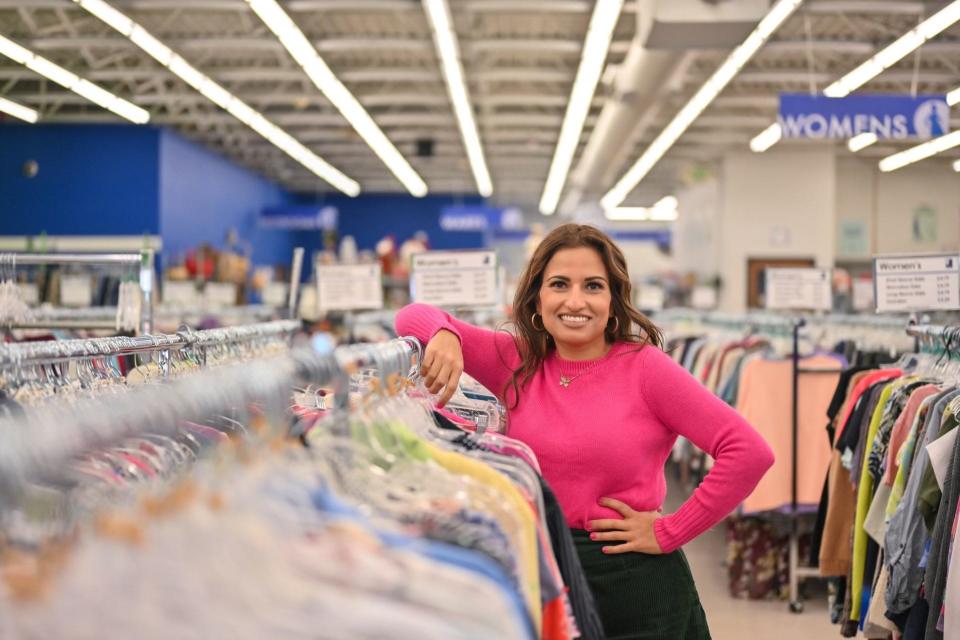How do I get the best out of thrifting? Expert tips to find treasures with a big payoff.

With the news this month that a Virginia woman bought a $3.99 vase at a thrift store and sold it for more than $100,000, the question arises: How can I do that?
The chances of finding that big score are pretty rare, said one professional thrifter, but it is fun trying.
Thrifting is not new, but it has changed in recent years. While people may have before been shy to admit they bought something at a thrift store, it has now become a trendy thing to do.
USA TODAY spoke to two professional thrifters for some tips on how to get started thrifting for yourself, if you’re interested in becoming a reseller or simply searching for that rare find you can sell for a lot of money.
How has thrifting changed?
Dina Younis started thrifting at age 13 in Jordan, where her family had moved from Akron, Ohio. Thrifting wasn’t big in Jordan or with her family, but Younis realized quickly how much great stuff she could get for a small amount of money. When she moved back to Akron at age 14, she continued her passion for thrifting.
Younis, now 39, started writing a blog about thrifting as a hobby in 2008. But this was before the term “influencer” was even a thing.
Good finds: A rare Italian vase bought at Goodwill for $3.99 was just sold for over $100,000
During the pandemic in September 2020, Younis decided to quit her full-time job as a communications specialist for a philanthropic organization to focus on her thrifting business. She resells items online and focuses on educating others about thrifting through her partnerships with a variety of thrift stores.
“I can actually make a living off of doing something that I really enjoy, and I think is going to make a difference,” said Younis, who was pregnant with her second child at the time and home with a toddler.
Now Younis is a thrift influencer who has nearly 60,000 followers on Instagram, 6,000 on TikTok and 1,600 on Facebook using the handle @DinasDays.
When Younis started blogging, “thrifting was still very much taboo, and so I was one of the first blogs really to come out and talk about it.”
But in more recent years, thrifting has become more mainstream and widely accepted, Younis said. National companies like ThredUp have opened dedicated to selling secondhand clothes online, and the number of resellers on eBay and Poshmark and other sites has also grown.
Goodwill and other thrift stores also have their own online sales websites.
“In the past 18 months, it completely took a turn and it is just more popular and more accepted than ever,” Younis said.
Thrifting is popular among younger people
Part of that shift comes from younger shoppers, who are often more socially conscious and want to thrift to set their style, said Rajni Rao, 32, a professional thrifter who hosts pop-up vintage shops in the Washington, D.C., area.
Young people care about the environment, so they like the aspect of reusing clothes and keeping them out of the landfills, Rao said.

But thrifting also allows them to find their unique style in a cheap way.
“There’s nothing like secondhand fashion to have something that nobody else has,” she said.
Thrifting spans generations, though, said Younis, who said the bulk of her followers are people over 30 who love a good deal.
She puts thrifters into three categories: those who are thrifting for environmental reasons, those who want to save money, and people who like to be creative, along with some crossover.
There’s very few reasons to buy something new, Younis said. Anything from clothing to home decor can be found secondhand, either at thrift stores or Facebook marketplace or liquidation stores, among other places, she said.
Rao uses her Instagram account, which has 6,000 followers, to educate people on thrifting and her TikTok account, with 9,500 followers, to hype secondhand events in the D.C. area as well as her pop-up locations. Her pop-up business and social media handles are @jungli_vintage.
Rao didn’t start thrifting until she was in high school and went to visit her brother in college. He knew she was into fashion. He gave her $20 and told her there was a place she could go buy secondhand clothes by the pound.
She was hooked.
“It was such a great way to explore my personal style on the cheap,” said Rao, who estimates that 90% of her own wardrobe is secondhand.
She's looking for anything vintage, which is categorized as anything more than 20 years old, though she also likes to find anything from earlier decades, too.
Rao hosts pop-up shops about twice a month around Washington that can attract a few hundred people. She and her husband also organize a large boutique vintage event called That’s So Vintage with other resellers. The event has sold out with more than 2,000 tickets and an hourlong line for walk-ups.
Her pop-up shops, which she started during the pandemic, can be in place just for a few hours, and sometimes she sells out of the 150 to 200 pieces she brings. Other times, her sales aren’t as good and she goes home with several racks of clothes for the next pop-up.

Younis said her niche is a little different because she partners with thrift stores instead of focusing on reselling ‒ and she has turned down deals to partner with fast-fashion brands because they don’t align with her philosophy of socially conscious thrifting. She is still working on more partnerships and says she makes about half of what she used to in her full-time job but knew it would take some time. She also co-hosts a podcast about thrifting called “Thanks, It’s Thrifted.”
How to save money at a thrift store
Find out about the specials at the store, Younis said. Some stores have a certain colored tag that is marked half off or host other specials. Ask staffers what days the discounts change and what days new donations are stocked.
At many stores, racks are probably restocked every day, she said. Check thrift stores’ social media accounts to find out about their special discounts, too, she said.
If you’re looking for good deals for yourself or to resell, you might need to go to the thrift store several times a week, Rao said.
Rao also suggests going to “paths less traveled,” so she often drives three hours from Washington to go to thrift stores where there’s more availability and fewer people shopping the same stores.
You also can shop at garage sales and estate sales for good finds, Rao and Younis said.
Uncomfortable Conversations: How to handle grandparents who spoil kids with holiday gifts.
Are thrifters, resellers taking away from people in need?
“I think that's such a huge myth,” said Younis, who has toured the back rooms of Goodwill stores and seen the amount of donations that come in.
Younis also often shops at Goodwill “bin” sales, which is where you can buy clothes and other items by the pound before the items will be sold to be sent overseas or sent to a landfill.
"There's just no possible way for us in the United States for that statement to be accurate because they can't possibly sell all of the donations that they're getting in,” she said. Often, the thrift store’s business model is also philanthropic or community-based in nature, so sales also help other programs, she said.

Why should I buy from a reseller instead of thrifting myself?
There’s nothing wrong with thrifting for yourself, Rao said. Buying from a reseller is paying for their time to search for and curate special items, she said.
Buying from a vintage reseller might be for a specialty piece “that you feel after having tried to thrift something yourself, you haven’t been able to find it, so you turn to the vintage shop to do it for you.”
Some people like thrifted clothes or vintage clothes but don’t want to go hunting at thrift stores themselves, said Rao, who declined to say how much she makes in her thrifting business but said it is lucrative enough that she continues to do it. Her full-time job is as a math tutor.
How do you find valuable items at a thrift store?
Sometimes it’s just pure luck, the professional thrifters said.
Being knowledgeable about certain brands or fabrics or materials can help you spot a rare find or something that could be valuable, Rao said. Rao said her best find was probably a full-length mohair coat she bought in perfect condition at a Florida thrift store for $20 that she sold for $150.
Younis also said the more you develop your eye for specific things, the better the chance you may find something valuable.
She also uses Google Images to take a photo of things to search for online value while she is shopping. You can also do searches on Ebay and other websites, she said.
An item like the $3.99 vase that garnered $107,000 is a once-in-a-lifetime find, Younis said.
"There are definitely many valuable treasures waiting to be discovered, but finding a 100K vase at a thrift store for $3.99 is like winning the thrift lottery."
Betty Lin-Fisher is a consumer reporter for USA TODAY. Reach her at blinfisher@USATODAY.com or follow her on X, Facebook or Instagram @blinfisher.
This article originally appeared on USA TODAY: Thrifting tips: How to spot treasures to resell or for yourself

 Yahoo Finance
Yahoo Finance 